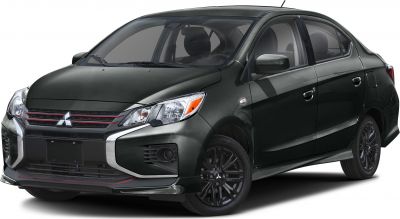 1960 Saab 96 Dimensions, Size & Specs
1960 Saab 96 Dimensions, Size & SpecsMeasurements of the 1960 Saab 96, engineered for optimal performance and comfort
| Dimensions | |
|---|---|
| Length: | 4170-4300 mm164.2-169.3 in13.7-14.1 ft |
| Width: | 1575-1590 mm62.0-62.6 in5.2-5.2 ft |
| Height: | 1461-1473 mm57.5-58.0 in4.8-4.8 ft |
| Weight Specifications | |
| Curb Weight: | 803-930 kg1770-2050 lbs |
| Tire Specifications | |
| Rims Size: | 15-inch rims:
|
| Tire Size: |
|
The Saab 96, produced from 1960 to 1980, is a classic compact sedan embodying Scandinavian design and engineering. Spanning a production period of two decades, this model gained recognition for its distinctive styling, durability, and compact footprint. The car's length varies between 4,170 mm to 4,300 mm (164 to 169 inches), offering a manageable size for urban and rural driving environments. With a width ranging from 1,575 mm to 1,590 mm (62 to 62.6 inches), the Saab 96 provided a comfortable cabin space without compromising agility. Its height measures between 1,461 mm and 1,473 mm (57.5 to 58 inches), contributing to a balanced silhouette and aerodynamic profile. The curb weight of the Saab 96 ranges from 803 kg up to 930 kg (1,771 to 2,050 lbs), supporting efficient performance and fuel economy. This model rides on 15-inch rims (4.5 x 15) fitted with 155/80 SR15 tires, highlighting its vintage yet functional wheel design. The Saab 96 was notable not just for its compact size but also for its engineering advancements during the era, including a front-wheel-drive layout that improved traction and handling. Its practicality combined with modest dimensions made it a popular choice for drivers seeking a reliable small sedan with character. Overall, the Saab 96 remains a significant vehicle in automotive history, representing mid-20th century innovation and style. Its size makes it an interesting comparison point when evaluating classic compact sedans from the same period.
Discover the standout features that make the 1960 Saab 96 a leader in its class
Have a question? Please check our knowledgebase first.
The Saab 96 produced between 1960 and 1980 had a length ranging from 4170 mm to 4300 mm. In imperial units, this corresponds to approximately 164.2 inches to 169.3 inches (or about 13.7 feet to 14.1 feet). These lengths reflect the modest size typical of sedans in that era, enabling ease of maneuverability in urban environments while providing adequate interior space for passengers.
The width of the Saab 96 from the 1960 generation ranges from 1575 mm to 1590 mm. When converted to imperial units, this is approximately 62.0 inches to 62.6 inches (around 5.17 feet to 5.22 feet). This relatively narrow width contributes to the car’s efficient use of space, making it suitable for narrow European streets and providing a comfortable cabin without being bulky.
The height of the Saab 96 from 1960 to 1980 ranges between 1461 mm and 1473 mm, which translates to roughly 57.5 inches to 58.0 inches, or about 4.8 feet to 4.83 feet. The moderate height complements the car’s aerodynamic shape and low center of gravity, which improve stability and driving performance.
The curb weight of the Saab 96 produced between 1960 and 1980 spans from 803 kg to 930 kg. In pounds, this equals approximately 1771 lbs to 2050 lbs. This relatively light body weight contributes to enhanced fuel efficiency and nimble handling for the vehicle, characteristics valued in compact sedans of its time.
The Saab 96 from the 1960 generation comes equipped with rims sized 4.5 x 15 inches. The standard tire size for this model is 155/80 SR15. This combination balances comfort and handling, offering enough sidewall height for ride quality while maintaining sporty responsiveness characteristic of Saab cars.
A standard modern garage door is typically about 2.4 meters (8 feet) wide and around 2.1 to 2.4 meters (7 to 8 feet) tall. Given that the Saab 96 lengths range up to 4.3 meters (14.1 feet), widths up to 1.59 meters (5.22 feet), and heights up to 1.47 meters (4.83 feet), the car comfortably fits into standard garages. Its compact dimensions make parking easier compared to many modern vehicles, meaning owners generally encounter no issues storing the Saab 96 in typical residential garages.
The Saab 96, introduced in 1960, effectively replaced the Saab 93 as the compact sedan in Saab's lineup. Compared to the 93, the Saab 96 offered a slightly longer and wider body, enhancing passenger comfort and cargo space. While exact predecessor dimensions vary, the 96's length (up to 4300 mm) and width (up to 1590 mm) represented modest growth, aligning with emerging consumer demand for more interior room and improved stability without sacrificing the nimbleness essential to smaller European cars.
In the context of 1960s compact sedans, the Saab 96's dimensions—length from 4170 mm to 4300 mm, width between 1575 mm and 1590 mm, and height around 1461 mm to 1473 mm—position it as moderately sized. Compared to contemporaries like the Volkswagen Beetle or Ford Anglia, the Saab 96 stands out with its more aerodynamic shape and slightly larger passenger space. Its relatively lightweight design also provides performance advantages. These factors combined to make the Saab 96 competitive while retaining distinctive Swedish engineering traits.
The Saab 96, with its compact exterior dimensions yet thoughtful interior layout, offers a surprisingly comfortable cabin for its size. The design emphasizes ergonomic seating and ample headroom owing to its modest height of approximately 1461-1473 mm (57.5-58 inches). While rear legroom may be limited compared to modern cars, the cabin was designed to maximize space efficiency, providing good shoulder room relative to its 1575-1590 mm (62.0-62.6 inch) width. The restrained curb weight and suspension tuning also contribute to a ride quality that balances comfort and driving engagement.
The Saab 96, produced from 1960 until 1980, holds a distinct place in automotive history due to its unique combination of robust engineering, safety innovations, and aerodynamic design. It was one of the earliest cars with front-wheel drive and two-stroke (later V4) engines that provided strong performance for its time. Its compact dimensions combined with pioneering safety features established Saab as a notable manufacturer focused on driver experience and safety. Moreover, the Saab 96 enjoyed significant success in rally racing, further cementing its status as a legend among enthusiasts and collectors alike.
Discover similar sized cars.

| Production: | 2019-present |
|---|---|
| Model Year: | 2020 |
| Length: | 4305 mm169.5 in |
| Width: | 1669 mm65.7 in |
| Height: | 1504 mm59.2 in |

| Production: | 2013-2019 |
|---|---|
| Model Year: | 2013 |
| Length: | 4305 mm169.5 in |
| Width: | 1669 mm65.7 in |
| Height: | 1504 mm59.2 in |

| Production: | 2019-present |
|---|---|
| Model Year: | 2020 |
| Length: | 4305 mm169.5 in |
| Width: | 1670 mm65.7 in |
| Height: | 1505-1515 mm59.3-59.6 in |
